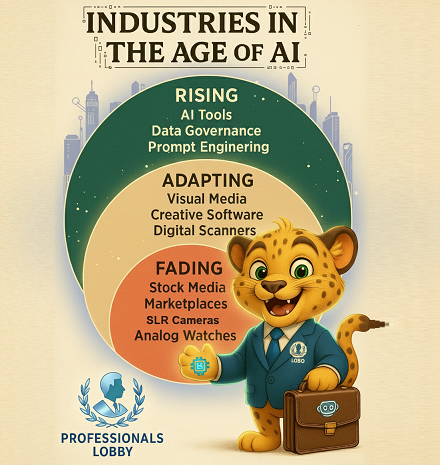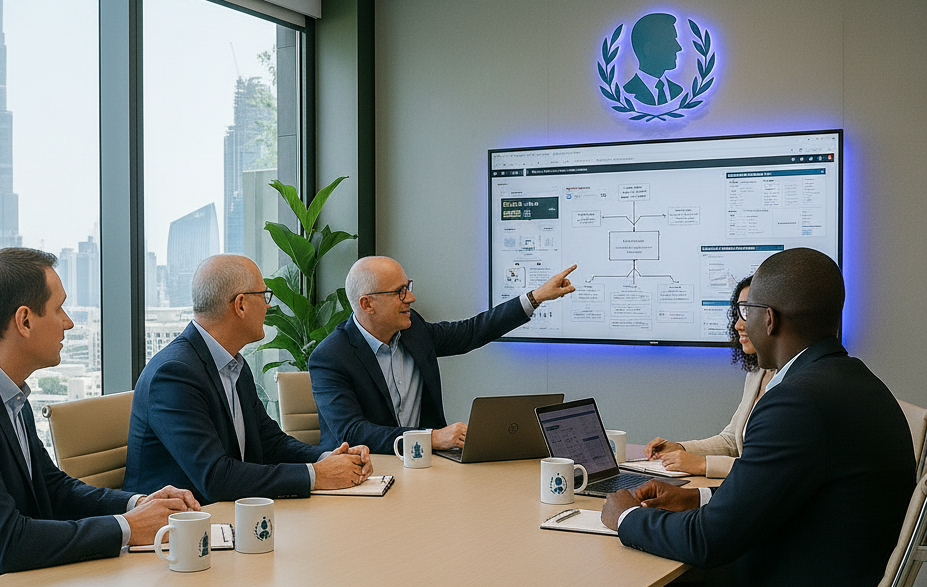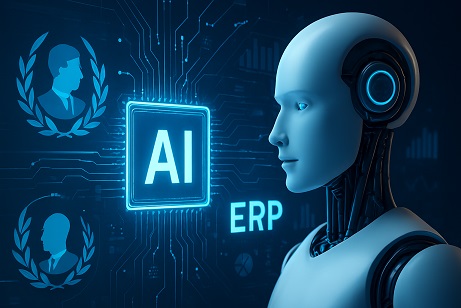AI's ability to generate high-quality images, videos, music, text, and code on demand is fundamentally reshaping creative industries. What used to require specialized tools, technical skills, and significant time investment now takes just a prompt and seconds to generate. This comprehensive analysis examines which companies will survive, which will transform, and which will become the modern equivalent of typewriter manufacturers.
Executive Summary:
- Adobe will likely survive by integrating AI as a creative co-pilot
- Stock media platforms face existential threats from AI generation
- OMR scanners and similar data-entry devices will become obsolete
- New opportunities emerging in AI governance and customization
- The shift mirrors industrial revolution impacts on manual crafts
Quick Navigation
1. The General Shift: Creation Becomes Commoditized
AI is fundamentally changing the economics of creation. What was once scarce and required specialized skills is becoming abundant and accessible to anyone with a basic understanding of prompt engineering.
Pre-AI Creative Process
- Time-intensive creation
- Specialized tools required
- Technical skills needed
- High cost of production
- Limited variations
AI-Era Creative Process
- Instant generation
- Prompt-based interface
- Accessible to all skill levels
- Minimal marginal cost
- Unlimited variations
The Scale of Disruption
2. Impact on Visual Media Giants
The stock photography and creative software industries face the most immediate disruption from AI image generation. Here's how major players are adapting:
Adobe
Past Dominance
Creative Suite with Photoshop, Illustrator, Premiere Pro - tools for manual creation
Current Strategy
Rapid integration of Firefly AI, Adobe Sensei, and generative fill across all products
Future Direction
Hybrid creative + AI co-pilot model with subscription-based credit systems
Survival Strategy
Shutterstock
Past Business
Stock photo marketplace with contributor network
Current Adaptation
Partnerships with OpenAI and NVIDIA for training data
Future Trajectory
Transition from stock supplier to AI content data broker
Major Threats
- Static photo value declining rapidly
- Users generating exactly what they need instantly
- Margins collapsing on generic content
Potential Opportunities
- Licensing data for AI model training
- Providing curated "ethically sourced" datasets
- Specialized niche content with clear rights
Getty Images
Past Position
Premium licensed media for publishers and corporations
Current Response
Launching proprietary AI generator trained only on licensed content
Future Position
Enterprise-grade, copyright-compliant visual AI provider
Market Segmentation Impact
Maintained Segments
- Major corporations needing legal protection
- News organizations requiring verifiable sources
- Enterprises with brand compliance requirements
Lost Segments
- Small businesses and startups
- Individual creators and bloggers
- Educational and non-commercial users
3. OMR Scanners and Data-Entry Devices
Specialized hardware for data capture faces near-total obsolescence as AI can extract structured information from any document or image.
The Coming Obsolescence of OMR Technology
OMR Scanners (Current)
AI Document Processing (Future)
Obsolescence Timeline
4. Other Industries Losing Importance
Many industries face similar disruption patterns to typewriter manufacturers during the computer revolution. Here's a comprehensive analysis:
Adaptation Strategies for At-Risk Businesses
Embrace AI Integration
Incorporate AI capabilities into existing offerings rather than competing against them
Specialize in Niche Markets
Focus on areas where human judgment and specialized knowledge still provide value
Pivot to Services
Shift from product sales to consulting, customization, and implementation services
5. Emerging Growth Areas
While some industries decline, new opportunities are emerging in the AI ecosystem. Here are the sectors positioned for growth:
AI Tool Aggregators & Marketplaces
Platforms that help users navigate the complex landscape of AI tools and find the right solutions for their needs.
Data Governance & Compliance
Firms specializing in verifying training data legality, copyright compliance, and ethical AI practices.
Prompt Engineering & Customization
Services focused on fine-tuning AI models, developing effective prompts, and creating branded AI solutions.
Ethical Data Licensing
Networks providing legal, properly tagged, bias-free datasets for AI training with clear ownership rights.
Digital Identity & Authenticity
Solutions for verifying content authenticity, detecting deepfakes, and establishing digital provenance.
Human-AI Hybrid Consulting
Services that combine human expertise with AI automation to deliver optimal results.
6. The Big Picture: Historical Parallels
AI is doing to digital creative industries what industrial machines did to manual craft industries 150 years ago. Understanding these patterns helps contextualize the transformation.
Industrial Revolution (1800s)
Impact on Manual Crafts
- Elimination of repetitive manual labor
- Explosion of manufacturing productivity
- Emergence of factory systems and mass production
- Decline of artisan crafts for common goods
Long-term Outcome
Shift from craft production to industrial design - artisans became designers overseeing machines rather than makers
AI Revolution (2020s)
Impact on Digital Crafts
- Elimination of repetitive creative labor
- Explosion of individual creative productivity
- Emergence of prompt-based creation systems
- Decline of generic creative services
Emerging Pattern
Shift from asset creation to creative direction - creators become "meta creators" designing systems and workflows
The Future Creative Workforce
AI Creative Directors
Professionals who design prompts, workflows, and oversee AI creative output
Model Customizers
Experts in fine-tuning AI models for specific brand voices and visual styles
AI Ethics Officers
Specialists ensuring responsible AI use and compliance with regulations
Workflow Architects
Designers of human-AI collaborative processes for maximum efficiency
Strategic Implications for UAE Businesses
Embrace AI as Co-pilot
View AI as augmentation rather than replacement - focus on human-AI collaboration
Invest in Prompt Literacy
Develop organizational capability in effective AI communication and prompting
Focus on Strategic Creativity
Shift creative resources from execution to strategy, direction, and oversight
Prioritize Ethical Implementation
Establish clear guidelines for responsible AI use and content verification
Key Recommendations
For Creative Professionals
Master AI tools as creative assistants rather than viewing them as threats. Focus on developing strategic creative direction skills.
For Businesses
Audit creative workflows to identify AI automation opportunities. Invest in prompt engineering training for teams.
For Investors
Look beyond traditional creative tools to AI infrastructure, governance, and customization platforms.
For Educators
Update curricula to include AI collaboration, prompt design, and ethical AI use alongside traditional creative skills.
Navigate AI Transformation with Expert Guidance
Our consultants help UAE businesses develop AI adaptation strategies and identify new opportunities in the evolving creative landscape.
Schedule AI Strategy Consultation


